It has been a long time coming, but Ruger
has finally built a sixgun that many shooters have been yearning
for a long time. When Ruger started building their Blackhawk
.357 Magnum revolvers back in 1955, it was an instant
success, but shooters being the way we are, wanted a larger
bore, and a Blackhawk in .44 Special was in the works. However,
things changed when Bill Ruger
heard of the .44 Magnum cartridge that was soon to be
introduced, and scrapped the plans for the .44 Special to work
on building the .44 Magnum.
The .44 Magnum uses a case identical to the Special, except the
magnum is a bit longer. When the .44 Magnum Blackhawk went into
production in 1956, it used a slightly larger frame than did the
.357 Blackhawk. Of course, shooters could still shoot .44
Special ammo in their .44 Magnum sixguns, but still wanted a .44
Special Blackhawk built on the .357 Magnum-sized frame. For many
years now, shooters have been trying to get Ruger to build such
a Blackhawk. Even the legendary Skeeter Skelton lobbied
for such a sixgun to be produced by Ruger, to no avail. The
requests have fallen upon deaf ears for decades, and the folks
at Ruger had a practical answer, that being that shooters could
still shoot .44 Special ammunition from their .44 magnum
Blackhawks and Super Blackhawks. Ruger has even produced
handier, easier-to-carry Super Blackhawks, offering them with
the smaller XR3-RED
grip frames and shorter barrels, along with fluted
cylinders. Still, the demand for .44 Special Blackhawks built on
the smaller .357 Magnum-sized frame is such that custom
gunsmiths stay covered up with work converting Old
Model .357 Blackhawks into .44 Special sixguns. While
the New Model .357 Magnum Blackhawks are built on the .44 frame,
and have been since 1973, hundreds if not thousands of the
smaller, handier Old Model .357 Blackhawks have been converted
into .44 Special sixguns for shooters who fully appreciate its
difference in size and handling qualities.
Now, a couple of factors have developed that
have finally brought us the .44 Special that we want. First of
all, for the .50th Anniversary of the Blackhawk,
Ruger produced a special model that used a modern version of the
original .357 Blackhawk frame. While having New Model internals
with the transfer bar safety system, the Anniversary Blackhawk
used a smaller frame, sized like the original .357 frame, and
also wore the original style Micro rear sight without the
protective ears of the later Old Model Ruger Blackhawk frames.
This original frame style has become known as the Flattop, to
distinguish it from the frames with the raised protection for
the rear sight. Another thing that made the development of the
.44 Special possible was Ruger’s move to manufacturing cells
about a year ago. This enables Ruger to produce small-batch
orders rather quickly. Instead of having to manufacturer many
thousands of a particular model with long lead times, Ruger can
produce smaller orders in an efficient way, making it profitable
to fill these relatively small orders, and get them to market
quickly. Finally, Lipsey’s approached Ruger with a firm
order for 2000 of the .44 Special Flattop Blackhawks. Since
Ruger already had the tooling to produce the smaller Blackhawk
frame, the manufacturing ability to produce the guns
efficiently, and a major wholesaler ready to commit to at least
2000 revolvers, the decision was made to proceed. Finally, after
all these years, the .44 Special Blackhawk is in production!
I received two of them here about a week ago,
and meant to work through the night to get a review up within
twenty-four hours. However, a couple of things occurred that
shot that plan down. First of all, the day that the guns
arrived, a major ice storm hit, which has really hurt the folks
in Kentucky to our north. Also, a couple of Tennessee counties
were hit with heavy ice and power outages. Boge,
who is my little brother and webmaster, had no power nor cable
internet service. I can shoot the guns, take the pictures, and
write the review, but without Boge to run the website, I can do
nothing. Then, the next day, Boge had power, but still no
internet service. Since we couldn’t post the review, I just
kept on shooting the .44 Special Blackhawk. A few hours later,
Boge called me from the hospital. He had a heart attack, and was
rushed in for an emergency angioplasty. Since Boge was out of
commission for a few days, I kept on shooting the Blackhawk. The
more I shot it, the better I liked it. I tried many different
handloads and a few factory loads in the Blackhawk, and was
well-pleased with the performance of the sixgun.
Before I delve too deeply into the shooting of
the .44 Special Blackhawk, I will try to cover a few
specifications of this revolver. The Lipsey’s .44 Special is
produced with either a four and five-eighths inch or a five and
one-half inch barrel. I have one of each here right now. First,
I was really impressed with the fit and finish of these sixguns.
The grip frames, which are made of blued steel, fit the cylinder
frames perfectly. It is obvious that these parts are carefully
fitted and polished together at the factory. Also, the ejector
rod housing is made of blued steel. This adds a bit of weight to
the guns, but also gives them a better balance, feeling much
like the old original Colt Single Action Army (SAA)
revolver. The grip shape is the New Model XR3, as was introduced
on the New Vaquero a
few years ago. This grip shape is like on the original
Blackhawk, and originated with the 1851 Colt Navy and continued
with the 1873 SAA. It is one of the best grips ever designed for
a single action sixgun. The grip panels are checkered black
plastic, and fit the grip frame very well. The two guns that I
have here are very well-fitted. The barrel/cylinder gaps on the
four and five-eighths and five and one-half inch guns measure
two one-thousandths (.002) and three one-thousandths (.003) of
an inch, respectively. This is perfect. Many gun manufacturers
have really loosened their standards on b/c gaps, and one
well-known and highly respected revolver maker allows gaps of up
to ten one-thousandths (.01) inch. That is much too loose. These
Rugers are tight, and it shows up in the performance. A gun with
a barrel/cylinder gap that is too wide will spit powder out the
gap and lose velocity, compared to a properly-fitted gun. These
Blackhawks are built right. Less you think that Ruger
cherry-picked a couple of guns to send to me, these came direct
from the wholesaler’s shelf, and were not hand-picked in any
way. They grabbed two off the shelf and shipped them to my
dealer. Like the original Blackhawk, these have a Micro
adjustable rear sight fitted into the Flattop frame. The front
sight is a serrated blade integral with the ramp, and the combo
makes for a very good sight picture. The top of the front blade
sits about .492 inch off the top of the barrel, and is plenty
high enough for firing 250 grain bullets. In fact, in my hands,
the sight height is just right for shooting my favorite 250
grain Mt. Baldy Keith bullet
load, which runs about 1050 feet-per-second out of the four and
five-eighths inch barrel. The Ruger can stand stiffer loads, but
I have magnums for that. A 250 Keith at that velocity will do
just about everything that I need to do with a handgun. The
Flattop .44 Special also has Ruger’s ejector alignment pin
that they introduced on the New Vaquero. This allows the
chambers to line up perfectly at each “click” of the
cylinder rotation for loading and unloading of the chambers. I
really like this feature. It corrects one of my main gripes with
the New Model Ruger single actions that has aggravated me for
years. With the new system, that aggravation is gone. The sixgun
has Ruger’s internal lock. It is hidden beneath the grip
panels, and to activate, the user has to remove a grip panel and
insert and turn the key. If the owner likes, the grip panel can
be drilled to accept the key without removing the grip. Most of
us will just ignore the thing, but for those whom are required
by law, or just want to lock it, the device is there. It hurts
nothing, is hidden from sight, and absolutely will not lock
itself. The .44 Flattop has a nice, even blue-black finish. Not
a high polish like on the Anniversary
Super, but not a matte finish either. Somewhere in
between. There were no flaws observed in the finish of either of
the two revolvers. The four and five-eighths and five and
one-half inch guns weigh in at 41.8 and 43 ounces, respectively,
on my scale. The trigger pull measures a crisp four and
one-quarter pounds, and will receive a Poor
Boy’s Trigger Job soon. The cylinder diameter measures
1.677 inches, which is almost identical to the 1.671 inch
measurement of an old .357 Flattop that I used for comparison.
In fact, I dropped the .44 Special cylinder into the .357
Flattop frame and it fit perfectly.
For shooting the .44 Special Flattop, as I
mentioned earlier, I tried a lot of different ammo in this
sixgun. I did not fire the five and one-half inch gun, as that
one belongs to Greg. He
can shoot it if he wants to. The four-and five-eighths inch gun
is mine, and I fully intend to shoot it as much as I can.
Already, a lot of lead has been sent down its bore. Some of it
has been jacketed hollowpoint ammo, but mostly it has been 250
grain Keith-style lead semi-wadcutter ammo. I tried the
hollowpoints for testing purposes, but this sixgun will live out
the rest of its life, or at least the rest of mine, on a steady
diet of the Keith bullets. That is the classic .44 Special
bullet style, and is, in my opinion, the reason that God
invented lead. I get most of mine from Frank at Mt. Baldy
Bullets. As expected, the .44 Flattop fired everything fed to it
without fault. Every cartridge fired, and ejected without
hesitation. The ejector rod is plenty long to clear the cases
from the chamber, and again, that indexing pin is a welcome
addition to the New Model lockwork. I expected perfect
functioning, and that is what I got. What I did not expect was
the accuracy displayed by this sixgun. Most all loads tested
shot well, but some shot well enough to qualify this revolver
for bullseye competition. All accuracy testing was done holding
the Blackhawk in my Ransom Master
rest. This rest eliminates my error, and shows the capabilities
of the handgun. The best accuracy came from using Buffalo
Bore 250 grain ammunition, their 14B catalog number. This
ammo would shoot into one ragged hole at 25 yards, and do so
every time. It clocked 1053 feet-per-second across my
chronograph set twelve feet from the muzzle. A couple of my
handloads were almost as accurate, but the groups looked large
compared to the Buffalo Bore stuff. The hollowpoint loads tried,
the Speer 200 Gold Dot and the Buffalo Bore 185 grain
hollowpoint, shot into the three-inch range from this sixgun.
The heavier lead semi-wadcutters of 240 and 250 grain weights
performed much better, with handloads using Trail
Boss, H4227, Accurate #9 and Hodgdon
Universal Clays shooing right at the two inch mark, with a
couple of the loads putting five shots into just over an inch.
Again, I am very pleased with the accuracy of this sixgun.
A great sixgun needs a fine holster. For field
carry, there are some very good holsters on the market that will
work well. However, for this new .44 Special Flattop, a tooled
rig is also in order. I have recommended Simply Rugged
holsters for several years for good, practical field carry, and
now Simply Rugged isn’t just simply rugged anymore, but has
introduced a line of fully-tooled Western leather that is as
good as any that I have ever seen. Shown here with this new .44
Special is a tooled rig that they call the “Pair and a
Spare”. As the name implies, it is a three-gun rig, having
a strong side holster on each side, and a cross draw up front.
The name was coined by my friend John Taffin, and he
definitely knows his holsters. Of course, all of the holsters
are removable, allowing the carry of one, two, or three guns,
depending upon the particular need at the time. This rig should
prove to be very popular with the Cowboy
Action Shooting crowd. The belt has plenty of ammo
loops, and is fully lined. The tooling is an example of
craftsmanship perfected. I have seen many examples of tooled
leather, but have never seen better than this. I have watched
Simply Rugged grow over the years from a maker of a simple,
durable, and practical pancake holster into what you see here
today. This is a beautiful, practical work of art,
well-decorated but classically executed, and I highly recommend
this rig.
It has been a long wait for some of us, but with
Ruger and Lipsey’s working together to make this happen, we
can finally go to our local gun store and buy a .44 Special
Blackhawk. These things are in high demand right now, but if you
want one, place your order with your local Lipsey’s dealer. It
won’t do any good to call Lipsey’s unless you are a dealer.
Pester your local dealer, and let him pester Lipsey’s. They
are in production, so get on your dealer’s list. If your
dealer does not yet know about this new sixgun, you need a new
dealer. Lipsey’s is scheduled to receive 500 of these
revolvers every quarter of 2009. After that, it has not yet been
decided if there will be more. The Lipsey’s .44 Special
Blackhawk is an accurate, practical, well-balanced, and powerful
sixgun that carries well and is well-crafted. It has been in the
works for a couple of years now, and for a long time, I was not
allowed to mention it. I am glad to see it finally in
production.
Check out the full line of Ruger products
here.
For the location of a Ruger dealer near you,
click on the DEALER FINDER at www.lipseys.com.
To order the beautiful holster rig shown here,
go to www.simplyrugged.com.
To order the Buffalo Bore ammunition, go to www.buffalobore.com.
For some of the best cast-lead bullets that
money can buy, go to www.mtbaldybullets.com.
Jeff
Quinn
| For a list of dealers where you can
buy this gun, go to: |
 |
|
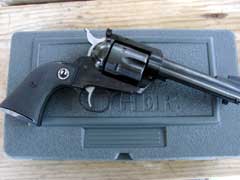
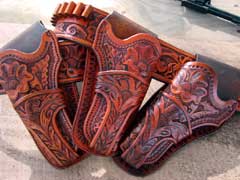

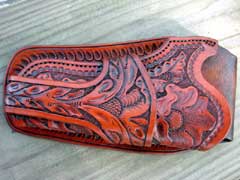
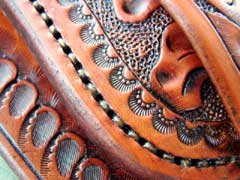
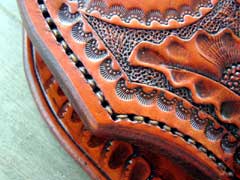
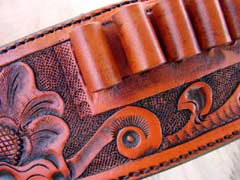
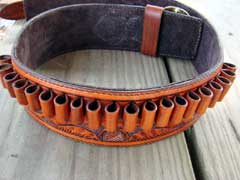
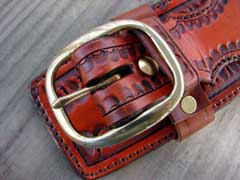
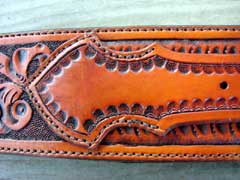
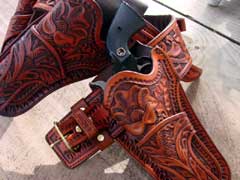
Simply Rugged's new Western line of
holsters. Rob Leahy calls this three-gun rig the
"Pair and a Spare".
|



Got something to say about this article?
Want to agree (or disagree) with it? Click the following link to
go to the GUNBlast Feedback Page.
![]()
![]()